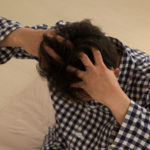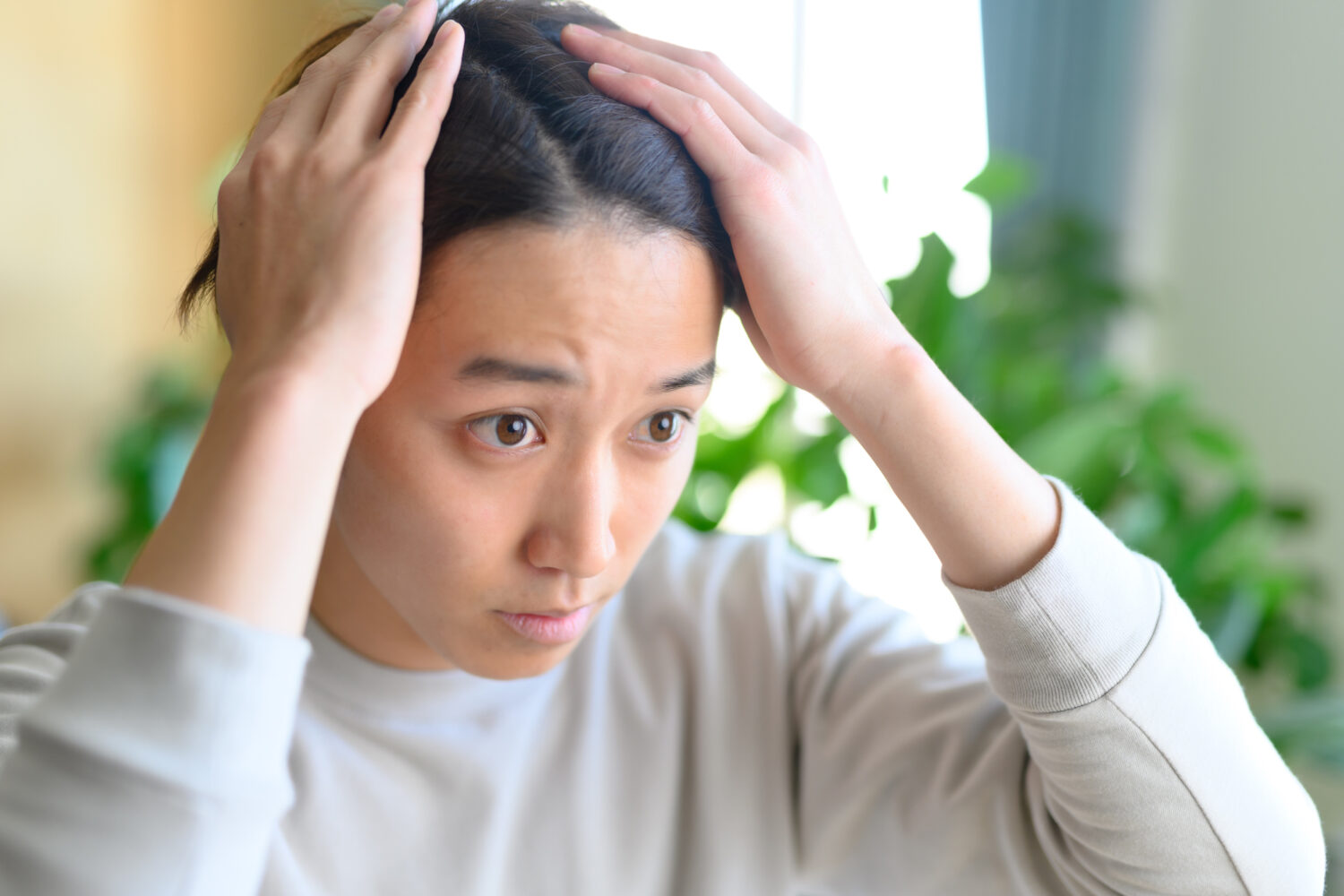
Many of you may be concerned about thinning hair due to a decrease in hair volume or an increase in hair loss, but wonder what measures are effective and whether there is a way to cure it yourself.
By learning about thinning hair correctly, you can maintain healthy hair.
In this article, a doctor specializing in thinning hair explains the causes, symptoms, treatments, and countermeasures for thinning hair in men.
The following information is useful for men suffering from thinning hair, and we encourage you to refer to it to find answers to your questions about thinning hair.
Below is a guide article that explains common mistakes men make when dealing with thinning hair.
この記事で説明する内容は?
- What are the causes of male thinning hair?
- How do I know if I have thinning hair?
- What types of Hair loss treatments are available and How effective are they?
- What measures can be taken to slow the Progression of thinning hair?
- What diet and lifestyle habits help improve thinning hair?
- Is there a difference between Male pattern boldness (AGA) and Normal thinning hair?
- Conclusion
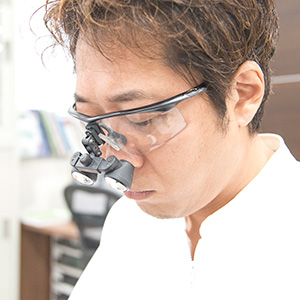
Kentaro Kato, Hospital director of Osaka AGA Kato Clinic group, specializing in comprehensive hair treatment. We specialize in cutting-edge treatments for a variety of clinically proven effective treatments for thinning hair and hair loss. Graduated from Faculty of Medicine, Kinki University in 2001 Worked at plastic surgery of Osaka Medical and Pharmaceutical University Hospital as an anesthesiologist from 2001 to 2005. Worked as a head of plastic surgery at major cosmetic surgery, Hair Transplant Department from 2005 to 2011. Opened Osaka AGA Kato Clinic in 2011. Japan Society of Plastic and Reconstructive Surgery, Regular Member. The Japanese Society for Regenerative Medicine, Regular Member. World Academy of Anti-Aging & Regenerative Medicine, Regular Member.
What are the causes of male thinning hair?
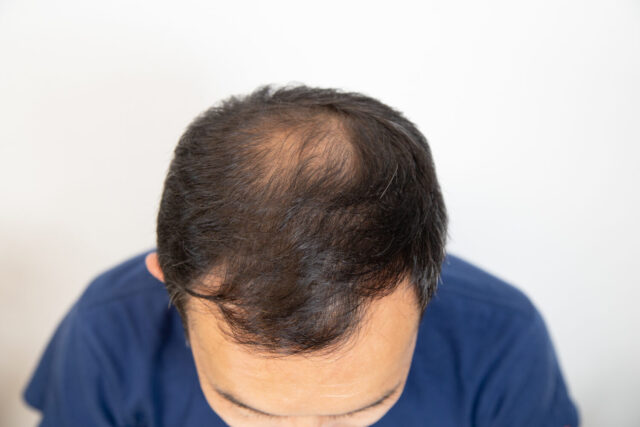
Thinning hair in men is often related to multiple causes. The following typical causes are discussed here.
- Genetic factor
- Male hormone (DHT)
- Stress and lifestyle habits
- Side effects of illness or medication
- Malnutrition
- Scalp trouble
Genetic factor
It has been medically reported that heredity is indeed a cause of thinning hair.
If many of your relatives have thinning or balding hair, there is a greater chance that you will inherit their genes. In particular, if someone on your mother’s side of the family has thinning hair, there is a high likelihood that you will also have thinning hair.
Effects of male hormones (DHT)
DHT (dihydrotestosterone), one of the male hormones, is thought to be the cause of thinning hair in men.
DHT is produced from the male hormone testosterone by the action of an enzyme; excessive production of DHT can interfere with hair growth and induce hair loss, leading to hair thinning.
The following article discusses androgenetic alopecia, which occurs in men in their 40s to 60s.
https://kato-aga-clinic.com/injection_therapy/sdhg/Stress and lifestyle habits
Stress and irregular lifestyle can also cause thinning hair. Stress, through activation of the sympathetic nervous system, causes blood vessels to constrict and blood circulation to deteriorate.
Poor circulation makes it difficult for nutrients to reach the scalp and hair follicles, which can cause thinning hair.
Excessive alcohol consumption and smoking can also cause thinning hair.
Side effects of illness or medication
Thinning hair can also be caused by side effects of some diseases and medications.
Anti-cancer drugs, such as those used in autoimmune diseases and cancer treatments, are known to cause hair loss side effects.
Diseases such as iron deficiency anemia and hypothyroidism can also cause hair loss.
Malnutrition
Nutritional deficiencies and scalp problems can also lead to thinning hair. An unbalanced diet leads to a lack of protein and minerals such as zinc that should be delivered to the hair.
Too much sugar and oil can lead to clogged pores due to excessive sebum production.
Scalp trouble
The following external factors can disrupt the scalp environment and lead to thinning hair
- Prolonged exposure to ultraviolet radiation
- Errors in hair care.
- Use shampoo that does not match
How do I know if I have thinning hair?
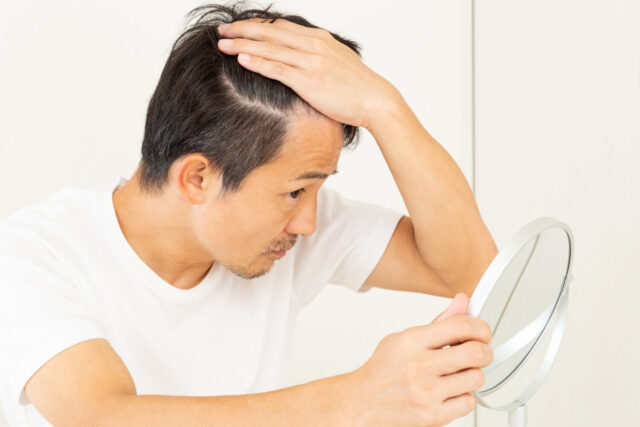
In order to slow the progression of thinning hair, it is first important to correctly identify your own thinning hair condition. Here, we will explain the symptoms of thinning hair in detail.
Progressive stages of thinning hair
Thinning hair has different symptoms depending on the stage of progression. In general, there are 3 stages;
- Initial-stage: Hair becomes thin and scalp becomes transparent
- Medium-stage: Hair becomes less abundant and thinner on the whirlpool (top of the head) and frontal area.
- Progressive-stage: Hair on the top of the head and frontal area is lost, and baldness progresses.
Early detection is important because the disease is still easily treatable in its early stages.
Judged by the amount and frequency of hair loss
It is also important to look at the amount and frequency of hair loss in order to properly assess the symptoms of thinning hair.
Hair loss is a natural phenomenon in which old hair falls out in order for new hair to grow, but if you are losing more than 100 strands per day, you should be careful.
The frequency of hair loss is also important and may be a sign of thinning hair if;
- Many hairs falling out on the pillow when I wake up in the morning.
- Lots of hair loss when shampooing
Relationship between scalp condition and thinning hair
The condition of the scalp is also important to properly assess the symptoms of thinning hair. A healthy scalp has adequate sebum production and moisture retention, which keeps hair follicles healthy.
On the other hand, if the scalp is dry or produces excessive sebum, the hair follicles cannot take up nutrients, which may cause hair thinning.
If circular or oval-shaped areas of hair loss occur on the head, it may be alopecia areata.
Alopecia areata is explained in detail in the following article.
Properly assessing the condition of the scalp and taking appropriate care of it is important to slow the progression of thinning hair.
What types of Hair loss treatments are available and How effective are they?

Proper treatment is necessary to slow the progression of thinning hair. This section describes the different types of thinning hair treatment methods and their effectiveness.
The following article explains why you may want to stop Male pattern boldness (AGA) treatment if it is not effective.
Thinning hair treatment with oral medication
Oral medications are one of the most common treatments for hair loss. Typical examples are finasteride and minoxidil.
Finasteride is effective in reducing the production of DHT, the cause of thinning hair, and slows the progression of thinning hair.
Minoxidil, on the other hand, slows the progression of thinning hair by promoting blood flow to the scalp and providing hair with the nutrients it needs.
Both medications are believed to be effective, but there is a risk of side effects, so it is important to consult with a doctor.
For more information about Minoxidil and Propecia (finasteride), click here.
Treatment of thinning hair with topical medications
Topical medications are treatments that are applied directly to the scalp to slow the progression of thinning hair. A typical example is minoxidil.
Application of minoxidil dilates blood vessels, improving blood flow and stimulating hair growth.
However, it is often difficult to fundamentally resolve thinning hair with topical minoxidil alone. Therefore, in consultation with a doctor, it is advisable to consider a combination of oral medications or hair transplant surgery.
Medical technologies such as hair transplantation and PRP therapy
Medical technologies such as hair transplantation and PRP therapy are treatments that can not only slow the progression of thinning hair, but can also increase hair growth.
Hair transplantation is a procedure in which one’s own healthy hair follicles are harvested and transplanted into thinning areas to grow hair naturally.
PRP therapy is a treatment that promotes hair growth by extracting components from one’s own blood and injecting them directly into the hair follicles. These medical techniques must be performed in accordance with a doctor’s diagnosis and treatment plan.
Learn more about PRP (Polyplatelet Plasma) Hair Regeneration Medicine/PRPGH (Growth Hair).
Thinning hair treatment with phototherapy
Phototherapy is a treatment method that uses the immunosuppressive effects of ultraviolet light to calm overreacting skin conditions.
It is recommended in the guidelines of the Dermatological Society for the treatment of alopecia areata and other thinning hair.
What measures can be taken to slow the Progression of thinning hair?
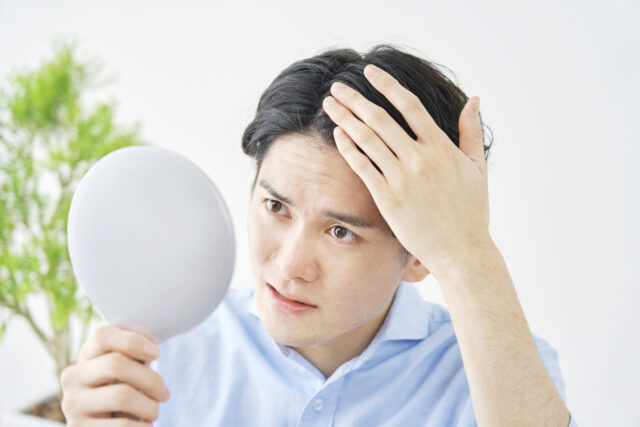
To slow the progression of thinning hair, it is necessary to take appropriate measures in daily life.
Here are some measures to slow the progression of thinning hair.
Scalp care
Poor scalp condition can lead to the progression of thinning hair. It is important to properly cleanse the scalp of dirt and sebum and keep it clean.
It is also recommended to incorporate scalp massage into your hair care routine. Rubbing the scalp when relaxing, such as during bath time or before bedtime, can be expected to stimulate blood flow and relieve stress.
Relieve stress
Stress can lead to thinning hair because blood flow is reduced and hair follicles do not receive the nutrients they need.
Moderate exercise, meditation, and hobbies are effective ways to reduce stress. It is also important to get enough sleep, as lack of sleep can also cause stress.
Moderate exercise improves blood circulation
Moderate exercise improves blood flow and provides the hair follicles with the nutrients they need.
Aerobic exercise such as walking or jogging is effective.
If you work at a desk a lot, you can strengthen your core by being conscious of sitting with good posture on a regular basis to avoid hunching over.
Use of hair growth products and shampoos
Hair growth products and shampoos should be used carefully, massaging the scalp with fingertips.
Shampoos help to improve scalp environment by;
- Prevents dandruff and itching
- Keeps hair and scalp healthy
- Prevents hair and scalp sweat odor
Shampooing too often or using strong detergent shampoos may wash away even the minimum necessary sebum. Be careful not to use too much.
Learn more about hair growth and hair regrowth products.
Take supplements
Vitamins and minerals are important nutrients for hair. Ideally, these nutrients should be obtained from the diet, but if this is difficult, supplements are another option.
Supplementation to supplement nutrients that are often lacking in the diet can help prevent hair growth and thinning.
What diet and lifestyle habits help improve thinning hair?

Proper diet and lifestyle are also important to improve thinning hair. The following is a list of diets and lifestyle habits that can help improve thinning hair.
Well-balanced diet
A nutritionally balanced diet provides the nutrients needed for healthy hair growth.
Hair is especially important for protein, vitamins, minerals, and iron.
Protein is necessary for hair production and is found in meat, seafood, and soy products.
Vitamins and minerals are necessary for maintaining a healthy scalp and are found in fruits and vegetables.
Iron is also responsible for carrying oxygen, and anemia can slow hair growth. It is found in red meat, spinach and liver.
Sleep quality and quantity
Improving the quality and quantity of sleep can improve thinning hair.
Sleep has the following benefits
- Growth hormone, essential for hair growth, is secreted in greater amounts during sleep.
- Division of hair matrix cells, the source of hair, is activated at night.
- During sleep, the parasympathetic nervous system works to improve blood circulation.
It is important to refrain from operating a smartphone or drinking alcohol just before bedtime, thereby eliminating any obstacles to sleep.
Smoking cessation and alcohol reduction
Smoking and alcohol consumption can inhibit hair growth.
The nicotine in cigarettes constricts blood vessels and deteriorates blood flow, thus preventing adequate supply of nutrients to the hair follicles.
The mineral zinc is necessary for the breakdown of alcohol. However, since the mineral is also essential for hair growth, drinking large amounts of alcohol will result in insufficient amounts being transported to the hair.
Quitting smoking and reducing alcohol consumption is one of the necessary measures to reduce the risk of hair thinning.
Is there a difference between Male pattern boldness (AGA) and Normal thinning hair?
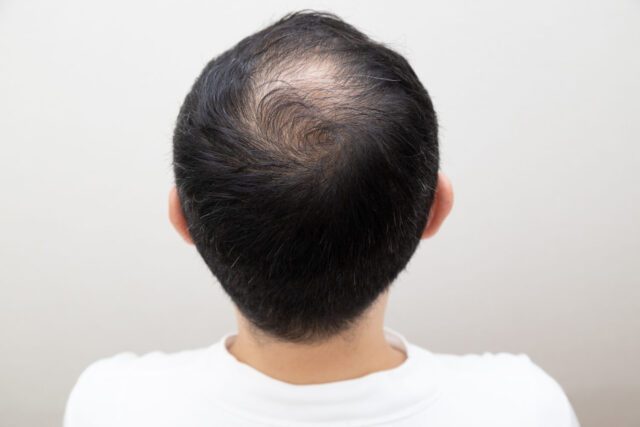
Male pattern boldness (AGA) is commonly known as thinning hair in men. However, Male pattern boldness (AGA) and thinning hair can have different symptoms.
Definition and characteristics of Male pattern boldness (AGA)
Male pattern boldness (AGA) is a type of alopecia involving male hormones, in which hair loss and thinning gradually progresses from the top and frontal areas of the head.
Male pattern boldness (AGA) can be caused by a variety of factors, but it is said that heredity and male hormones play a major role.
Male pattern boldness (AGA) is difficult to cure spontaneously, and if left untreated, will gradually become noticeably thinner and hair loss.
Male pattern boldness (AGA) and thinning hair
Male pattern boldness (AGA) is a form of alopecia caused by heredity or abnormalities in male hormones. Normal thinning or hair loss, on the other hand, is caused by internal and external factors other than these.
Thinning hair in general progresses gradually, often due to age, stress, and nutritional deficiencies, and the extent of thinning hair is relatively broad.
Male pattern boldness (AGA), on the other hand, is characterized by a limited extent of thinning hair, as it begins at the top of the head and frontal area.
Male pattern boldness (AGA) specialized diagnosis and treatment
Male pattern boldness (AGA) is diagnosed through blood tests to determine the progression of the disease and abnormal hormone production, followed by medical treatment.
Male pattern boldness (AGA) treatment includes prescriptions for oral and topical medications and medical techniques such as hair transplantation and PRP therapy. Treatment can be tailored to the individual’s body type, age, hair type, and other conditions.
Early detection and treatment of male pattern baldness is essential. If you have hair problems that cannot be resolved on your own, we recommend that you leave them to a specialized clinic.
Conclusion
This article describes the causes, symptoms, treatments, and countermeasures for thinning hair in men.
If you do not take care of your hair, it will only get thinner and thinner and your problems will only grow.
Try taking one simple step at a time, such as improving your lifestyle, exercising moderately, and using a shampoo that suits you. Take early action to prevent thinning hair and have healthy hair and scalp.
If you do not see any change with self-care or if you are not sure what kind of care you should take, we recommend consulting a professional clinic.








